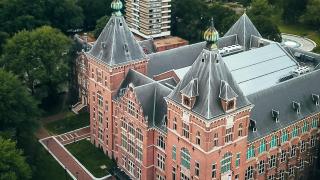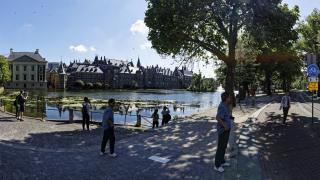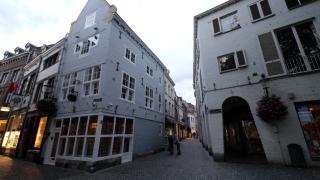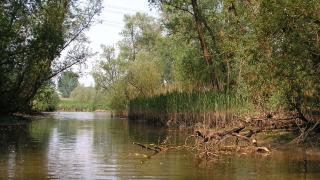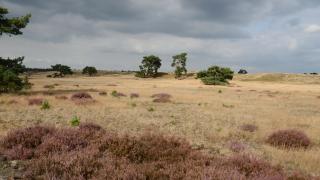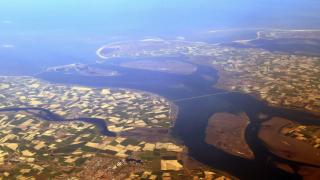Layers of Dutch History
Dutch history is layered and visible across the country.
- Roman forts once lined the Limes, now marked in Utrecht and Nijmegen. Remains are visible at Castellum Hoge Woerd (entry €6.50).
- Medieval cities like Haarlem and Utrecht still have canals and city walls dating from the 13th century.
- The Dutch Golden Age (17th century) brought global trade, art, and science. Amsterdam’s canal belt was built in this era. Rijksmuseum displays Golden Age paintings (entry €22.50).
- WWII left scars. The Anne Frank Huis in Amsterdam preserves a hidden annex (entry €16, timed tickets required). Rotterdam’s city center was rebuilt after 1940 bombings.
- Modern Dutch society values tolerance and innovation. The Delta Works, completed in 1997, protect the coast from flooding. Visit the Maeslantkering barrier near Rotterdam (free tours, 45 minutes from the city).
History shapes Dutch cities, landscapes, and attitudes. Exploring these layers reveals why Dutch society is open, resilient, and globally connected.
Golden Age and Canals
The Dutch Golden Age (17th century) transformed the Netherlands.
- Amsterdam, Haarlem, and Delft became global trade hubs. Merchants financed art, science, and canal construction.
- Amsterdam's canal belt (Grachtengordel) was built from 1613. It is now a UNESCO World Heritage site.
- Canal tours in Amsterdam cost €16–€20. Tours last 60–75 minutes. Boats depart every 15–30 minutes near Centraal Station.
- Walk the Herengracht, Keizersgracht, and Prinsengracht for historic merchant houses. Many have gabled facades from the 1600s.
- Haarlem’s canals and Grote Markt square show Golden Age architecture. Entry to the Frans Hals Museum is €16.
- Delft’s canals and Markt square are linked to painter Johannes Vermeer. The Vermeer Centrum Delft entry is €12.
- Rembrandt’s house (Museum Het Rembrandthuis, Amsterdam) shows his studio. Entry is €17.50. Closed Mondays.
- Visit canal districts early morning or late evening to avoid crowds. Many museums open at 10:00.
- Cycling is efficient. Bike rentals cost €10–€15 per day. Canal bridges can be steep.
- Many canal houses are private. Some are museums or hotels. Check opening times in advance.
War Stories and Remembrance
World War II left deep scars in the Netherlands.
- Nazi occupation lasted from May 1940 to May 1945. Over 100,000 Dutch Jews were deported.
- The Anne Frank House (Prinsengracht 263, Amsterdam) preserves the secret annex. Tickets (€16) must be booked online, often weeks ahead.
- The Verzetsmuseum (Resistance Museum, Plantage Kerklaan 61, Amsterdam) shows Dutch resistance stories. Entry is €14; allow 1.5 hours.
- In Arnhem, the John Frost Bridge marks Operation Market Garden. The Airborne Museum Hartenstein (Oosterbeek) explains the failed Allied assault. Entry €16.50.
- Kamp Westerbork (Drenthe) was a transit camp for Jews. The memorial and museum are open daily; entry €12.50.
- Rotterdam’s Laurenskerk and the 1940 bombing memorial recall the city’s destruction. Free to visit; guided tours available.
Practical advice:
- Book tickets online for major sites, especially Anne Frank House.
- Many museums have English signage and are wheelchair accessible.
- Remain quiet and respectful, especially at memorials.
- Photography may be restricted in sensitive areas.
- Public transport connects most sites; Arnhem is 1 hour by train from Amsterdam.
Living Traditions and Heritage
Dutch traditions remain visible in daily life.
- Zaanse Schans (near Zaandam) is an open-air museum with historic windmills and houses. Entry is €15.50. Visit year-round, 9:00–17:00.
- Kinderdijk, a UNESCO site, has 19 working windmills. Entry is €19.50. Best visited April–October.
- Marken preserves wooden houses and fishing culture. Ferries from Volendam run daily, €9.50 return.
- Gouda and Alkmaar hold weekly cheese markets (April–September). Gouda: Thursdays 10:00–12:30. Alkmaar: Fridays 10:00–13:00. Free entry.
- Wooden shoe (klompen) workshops operate in Zaanse Schans and Marken. Demonstrations are included with entry.
- Sinterklaas (mid-November–early December) is a major festival. Parades occur in most towns. Free to attend.
- King's Day (April 27) features nationwide street markets and orange-themed celebrations.
Tips:
- Most signs include English. Staff at major sites speak English.
- Join guided tours for deeper context. Book online to secure spots.
- Respect local customs, especially during festivals. Dress modestly in smaller villages.
Planning Your Historical Journey
Prioritize Dutch history sites by era or theme.
- Medieval: Muiderslot Castle (entry €17.50, 30 minutes by train from Amsterdam Centraal)
- Golden Age: Rijksmuseum (entry €22.50, open 9:00–17:00), Mauritshuis in The Hague (entry €19.50)
- WWII: Kamp Westerbork (entry €12.50, 2 hours by train from Amsterdam)
Use Dutch public transport (NS trains, local buses) for efficient travel.
- OV-chipkaart covers most routes. Buy at stations or online. Intercity trains connect major historical cities in under 1 hour.
Book tickets online for Anne Frank House, Rijksmuseum, and windmill sites.
- Reserve 2–4 weeks ahead for peak seasons (April–August). Early morning slots are less crowded.
Guided tours in English are widely available.
- Audio guides offered at most museums (Dutch, English, German, French).
Most historical sites are wheelchair accessible.
- Check official websites for specific accessibility info.
Dutch staff speak English.
- Signage in Dutch and English. Learn basic Dutch greetings for courtesy.
